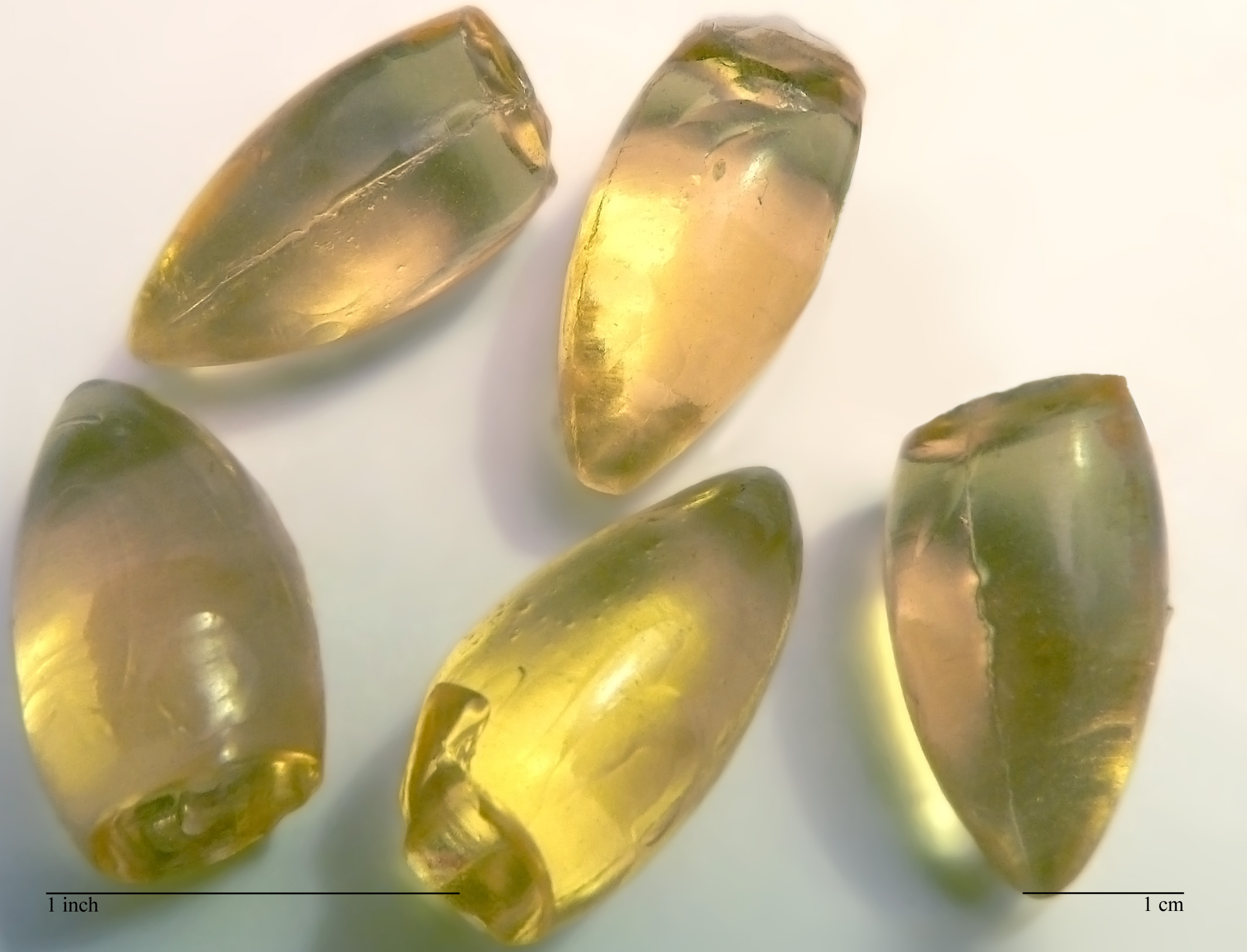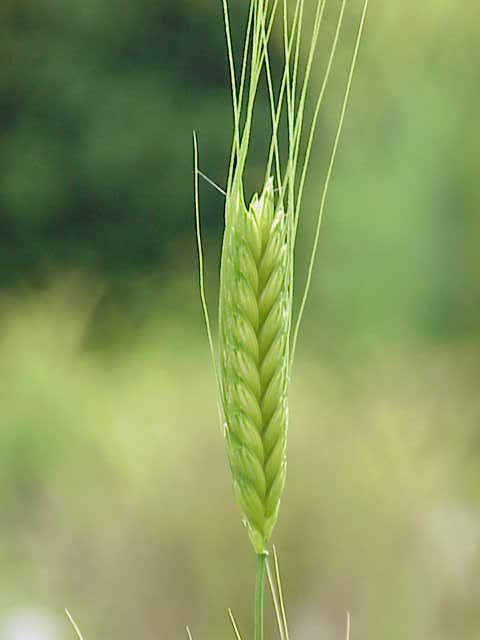|
Psyllium
Psyllium (), or ispaghula (), is the common name used for several members of the plant genus ''Plantago'' whose seeds are used commercially for the production of mucilage. Psyllium is mainly used as a dietary fiber to relieve symptoms of both constipation and mild diarrhea, and occasionally as a food thickener. Allergy to psyllium is common in workers frequently exposed to the substance. It is generally safe and moderately effective as a laxative. Use of psyllium in the diet for three weeks or longer may lower Blood lipids, blood cholesterol levels in people with elevated cholesterol, and may lower blood glucose levels in people with type 2 diabetes. Use of psyllium for a month or longer may produce a small reduction in systolic blood pressure. The plants from which the seeds are extracted tolerate damp and cool climates, and are mainly cultivated in northern India. Uses Preparation Psyllium is produced mainly for its mucilage content. The term ''mucilage'' describes a group ... [...More Info...] [...Related Items...] OR: [Wikipedia] [Google] [Baidu] |
Dietary Fiber
Dietary fiber (fibre in English in the Commonwealth of Nations, Commonwealth English) or roughage is the portion of plant-derived food that cannot be completely broken down by human digestive enzymes. Dietary fibers are diverse in chemical composition and can be grouped generally by their solubility, viscosity and Fermentation#Biological role, fermentability which affect how fibers are processed in the body. Dietary fiber has two main subtypes: soluble fiber and insoluble fiber which are components of plant-based foods such as legumes, whole grains, cereals, vegetables, fruits, and nut (fruit), nuts or seeds. A diet high in regular fiber consumption is generally associated with supporting health and lowering the risk of several diseases. Dietary fiber consists of non-starch polysaccharides and other plant components such as cellulose, resistant starch, resistant dextrins, inulins, lignins, chitins, pectins, beta-glucans, and oligosaccharides. Food sources of dietary fiber have ... [...More Info...] [...Related Items...] OR: [Wikipedia] [Google] [Baidu] |
Plantago
''Plantago'' is a genus of about 200 species of flowering plants in the family Plantaginaceae, commonly called plantains or fleaworts. The common name plantain is shared with the unrelated cooking plantain. Most are herbaceous plants, though a few are subshrubs growing to tall. Description The leaves are sessile or have a poorly defined petiole. They have three or five parallel veins that diverge in the wider part of the leaf. Leaves are broad or narrow, depending on the species. The inflorescences are borne on stalks typically tall, and can be a short cone or a long spike, with numerous tiny wind-pollinated flowers. Species The boundaries of the genus ''Plantago'' have been fairly stable, with the main question being whether to include '' Bougueria'' (one species from the Andes) and '' Littorella'' (2–3 species of aquatic plants).Albach, D. C., Meudt, H. M. & Oxelman, B. 2005Piecing together the "new" Plantaginaceae ''American Journal of Botany'' 92: 297–315. There a ... [...More Info...] [...Related Items...] OR: [Wikipedia] [Google] [Baidu] |
Plantago Afra Kz6
''Plantago'' is a genus of about 200 species of flowering plants in the family Plantaginaceae, commonly called plantains or fleaworts. The common name plantain is shared with the unrelated cooking plantain. Most are herbaceous plants, though a few are subshrubs growing to tall. Description The leaves are sessile or have a poorly defined petiole. They have three or five parallel veins that diverge in the wider part of the leaf. Leaves are broad or narrow, depending on the species. The inflorescences are borne on stalks typically tall, and can be a short cone or a long spike, with numerous tiny wind-pollinated flowers. Species The boundaries of the genus ''Plantago'' have been fairly stable, with the main question being whether to include '' Bougueria'' (one species from the Andes) and '' Littorella'' (2–3 species of aquatic plants).Albach, D. C., Meudt, H. M. & Oxelman, B. 2005Piecing together the "new" Plantaginaceae ''American Journal of Botany'' 92: 297–315. There are ... [...More Info...] [...Related Items...] OR: [Wikipedia] [Google] [Baidu] |
Mucilage
Mucilage is a thick gluey substance produced by nearly all plants and some microorganisms. These microorganisms include protists which use it for their locomotion, with the direction of their movement always opposite to that of the secretion of mucilage. It is a polar glycoprotein and an exopolysaccharide. Mucilage in plants plays a role in the storage of water and food, seed germination, and thickening membranes. Cacti (and other succulents) and flax seeds are especially rich sources of mucilage. Occurrence Exopolysaccharides are the most stabilising factor for microaggregates and are widely distributed in soils. Therefore, exopolysaccharide-producing "soil algae" play a vital role in the ecology of the world's soils. The substance covers the outside of, for example, unicellular or filamentous green algae and cyanobacteria. Amongst the green algae especially, the group Volvocales are known to produce exopolysaccharides at a certain point in their life cycle. It occu ... [...More Info...] [...Related Items...] OR: [Wikipedia] [Google] [Baidu] |
Constipation
Constipation is a bowel dysfunction that makes bowel movements infrequent or hard to pass. The Human feces, stool is often hard and dry. Other symptoms may include abdominal pain, bloating, and feeling as if one has not completely passed the bowel movement. Complications from constipation may include hemorrhoids, anal fissure or fecal impaction. The normal frequency of bowel movements in adults is between three per day and three per week. Babies often have three to four bowel movements per day while young children typically have two to three per day. Constipation has many causes. Common causes include slow movement of stool within the colon, irritable bowel syndrome, and pelvic floor disorders. Underlying associated diseases include hypothyroidism, diabetes, Parkinson's disease, celiac disease, non-celiac gluten sensitivity, Vitamin B12 deficiency, vitamin B12 deficiency, colon cancer, diverticulitis, and inflammatory bowel disease. Medications associated with constipation in ... [...More Info...] [...Related Items...] OR: [Wikipedia] [Google] [Baidu] |
Laxative
Laxatives, purgatives, or aperients are substances that loosen stools and increase bowel movements. They are used to treat and prevent constipation. Laxatives vary as to how they work and the side effects they may have. Certain stimulant, lubricant, and saline laxatives are used to evacuate the colon for rectal and bowel examinations, and may be supplemented by enemas under certain circumstances. Sufficiently high doses of laxatives may cause diarrhea. Some laxatives combine more than one active ingredient, and may be administered orally or rectally. Types Bulk-forming agents Bulk-forming laxatives, also known as roughage, are substances, such as fiber in food and hydrophilic agents in over-the-counter drugs, that add bulk and water to stools so they can pass more easily through the intestines (lower part of the digestive tract). Properties * Site of action: small and large intestines * Onset of action: 12–72 hours * Examples: dietary fiber, Metamucil, Citrucel, Fi ... [...More Info...] [...Related Items...] OR: [Wikipedia] [Google] [Baidu] |
Gluten-free
A gluten-free diet (GFD) is a nutritional plan that strictly excludes gluten, which is a mixture of prolamin proteins found in wheat (and all of its species and hybrids, such as spelt, kamut, and triticale), as well as barley, rye, and oats. The inclusion of oats in a gluten-free diet remains controversial, and may depend on the oat cultivar and the frequent cross-contamination with other gluten-containing cereals. Gluten may cause both gastrointestinal and systemic symptoms for those with gluten-related disorders, including coeliac disease (CD), non-coeliac gluten sensitivity (NCGS), and wheat allergy. In these people, the gluten-free diet is demonstrated as an effective treatment, but several studies show that about 79% of the people with coeliac disease have an incomplete recovery of the small bowel, despite a strict gluten-free diet. This is mainly caused by inadvertent ingestion of gluten. People with a poor understanding of a gluten-free diet often believe that they a ... [...More Info...] [...Related Items...] OR: [Wikipedia] [Google] [Baidu] |
Irritable Bowel Syndrome
Irritable bowel syndrome (IBS) is a functional gastrointestinal disorder characterized by a group of symptoms that commonly include abdominal pain, abdominal bloating, and changes in the consistency of bowel movements. These symptoms may occur over a long time, sometimes for years. IBS can negatively affect quality of life and may result in missed school or work or reduced productivity at work. Disorders such as anxiety, major depression, and myalgic encephalomyelitis/chronic fatigue syndrome (ME/CFS) are common among people with IBS.The cited review is based on sources ranging from 1988 to 2001 and is probably biased relative to a more recent research. The cause of IBS is not known but multiple factors have been proposed to lead to the condition. Theories include combinations of " gut–brain axis" problems, alterations in gut motility, visceral hypersensitivity, infections including small intestinal bacterial overgrowth, neurotransmitters, genetic factors, and food ... [...More Info...] [...Related Items...] OR: [Wikipedia] [Google] [Baidu] |
Weight Loss
Weight loss, in the context of medicine, health, or physical fitness, refers to a reduction of the total body mass, by a mean loss of fluid, body fat (adipose tissue), or lean mass (namely bone mineral deposits, muscle, tendon, and other connective tissue). Weight loss can either occur unintentionally because of malnourishment or an underlying disease, or from a conscious effort to improve an actual or perceived overweight or obese state. "Unexplained" weight loss that is not caused by reduction in calorific intake or increase in exercise is called cachexia and may be a symptom of a serious medical condition. Intentional Intentional weight loss is the loss of total body mass as a result of efforts to improve physical fitness, fitness and health, or to change Human physical appearance, appearance through slimming. Weight loss is the main Management of obesity, treatment for obesity, and there is substantial evidence this can prevent progression from prediabetes to Diabetes ... [...More Info...] [...Related Items...] OR: [Wikipedia] [Google] [Baidu] |
The New York Times
''The New York Times'' (''NYT'') is an American daily newspaper based in New York City. ''The New York Times'' covers domestic, national, and international news, and publishes opinion pieces, investigative reports, and reviews. As one of the longest-running newspapers in the United States, the ''Times'' serves as one of the country's Newspaper of record, newspapers of record. , ''The New York Times'' had 9.13 million total and 8.83 million online subscribers, both by significant margins the List of newspapers in the United States, highest numbers for any newspaper in the United States; the total also included 296,330 print subscribers, making the ''Times'' the second-largest newspaper by print circulation in the United States, following ''The Wall Street Journal'', also based in New York City. ''The New York Times'' is published by the New York Times Company; since 1896, the company has been chaired by the Ochs-Sulzberger family, whose current chairman and the paper's publ ... [...More Info...] [...Related Items...] OR: [Wikipedia] [Google] [Baidu] |
Dietary Supplement
A dietary supplement is a manufactured product intended to supplement a person's diet by taking a pill (pharmacy), pill, capsule (pharmacy), capsule, tablet (pharmacy), tablet, powder, or liquid. A supplement can provide nutrients either extracted from food sources, or that are synthetic (to increase the quantity of their consumption). The classes of nutrient compounds in supplements include vitamins, Dietary mineral, minerals, Dietary fiber, fiber, fatty acids, and amino acids. Dietary supplements can also contain substances that have not been confirmed as being essential to life, and so are not ''nutrients'' per se, but are marketed as having a beneficial biological effect, such as plant pigments or polyphenols. Animals can also be a source of supplement ingredients, such as collagen from chickens or fish for example. These are also sold individually and in combination, and may be combined with nutrient ingredients. The European Commission has also established harmonize ... [...More Info...] [...Related Items...] OR: [Wikipedia] [Google] [Baidu] |




